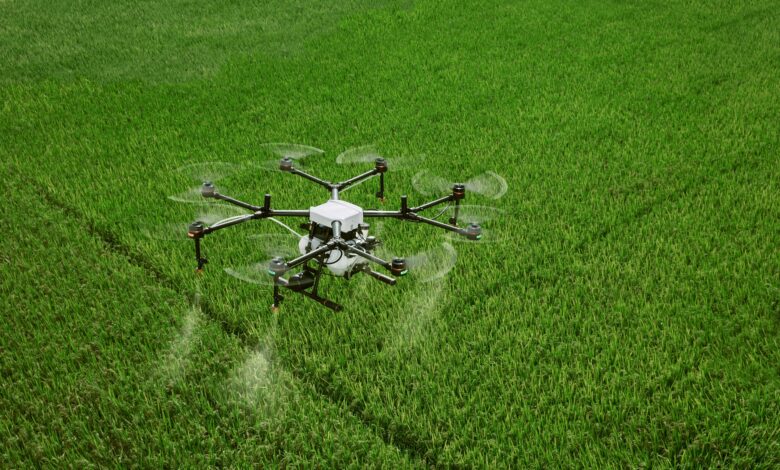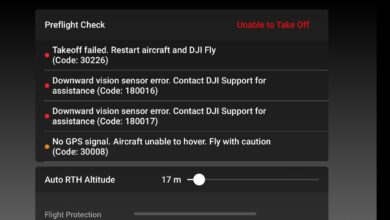Importance of Drone Technology in Agriculture Field

Drones have several practical applications for farmers, from inspecting crops for damage to capturing detailed aerial photographs. Advantages go far beyond those often associated with aerial photography. Just continue reading to learn how drones can be used in farming, or in other words, how they are already being used in the field of agriculture.
Aerial photographs with a high degree of detail
A high-resolution photograph looks substantially different from a standard photograph. Images with a good resolution can be enlarged by up to 1,600 percent without losing quality. High-resolution and low-resolution photographs differ not just in terms of quality but also in other ways. In this case, the photograph is available in a better resolution for download and sharing via cloud-based services.
Spots prone to disease outbreaks can be pinpointed with the use of high-resolution aerial photographs. In addition, VARI maps can be made using photographs captured by drones, and high-resolution aerial shots can be utilized by farmers to determine the state of their crops.
Localizing Water Sources
The use of aerial photographs has been greatly facilitated by drone technology, allowing farmers to more easily map agricultural lands. Agriculture is greatly aided by drones equipped with artificial intelligence, which allows farmers to monitor their crops constantly. If an acre of land is being irrigated, for instance, a drone equipped with a thermal imaging device can keep tabs on the system and detect problems in short order. The agriculture industry stands to gain from greater money and greater openness as a result of this.
The gadgets used in agriculture have the potential for autonomous flying and can be programmed to follow certain flight paths. After being collected, this information is processed by specialized software and presented in a format that is easily digestible by farmers. With this information, farmers may maximize profits while decreasing losses.
Maintaining a Healthy Harvest Through Monitoring
The use of drones in farming has the potential to completely alter conventional farming methods. Growers can now make better decisions on crop health, growth cycles, and spraying in the field thanks to this cutting-edge technology. Farmers can use their in-depth data analysis and mission planning to make more informed agronomic choices with their help. Drones are also novel instruments that can be employed in the field to perform manual tasks. It can fly in wind and rain and cover up to 12 acres every hour. There is a subset of drones that can operate in the dark and can avoid obstacles on their flight path.
Drones can be utilized for more than only topographical mapping and crop health monitoring. They can be equipped with night vision and thermal imaging capabilities. This helps farmers to detect where their livestock need assistance and where their fences are damaged.
They can also use their infrared vision to spot attacks on herds by predators and even going to the extent of applying fertilizer and insecticides by spraying them in the appropriate areas. Did we forget to mention that can even operate as mechanical pollinators? In the future, drones may even replace the need for bees.
Legal Issues : Drone Technology in Agriculture
Agricultural drones can be a great advantage for farmers but can pose legal difficulties. Due to the fact that drones can be flown over farms, anyone who do so without permission may be breaking the law. This concept stems back to common law, which defined property ownership as an area from the center of the earth to the heavens. The concept of ownership, however, has been constrained by the courts to the ground below the minimum FAA elevations and the airspace over which aircraft may fly. This is a significant obstacle that drone importers must overcome.
Drones are becoming increasingly popular in agriculture, and the expanding use of these devices has required additional governmental supervision. They can give farmers access to high-quality aerial photos that will aid them in managing their crops. In addition to saving time and money through semi-automated processes, drones are far more effective than human aircraft at certain activities.
There are many obstacles to overcome when attempting to regulate the use of drones in agriculture; nonetheless, engaging the public is essential. By integrating stakeholders, governments can better grasp the potential benefits of drones and how they can aid farms. To guarantee the technology is adequately controlled, the private sector must be involved in the regulatory process.
Follow Dronephi on Twitter, Facebook, Instagram, and LinkedIn, or join on Telegram channel for all the latest updates on FPV, Drone Tech, Military Drones, Drone Related News, and more!




